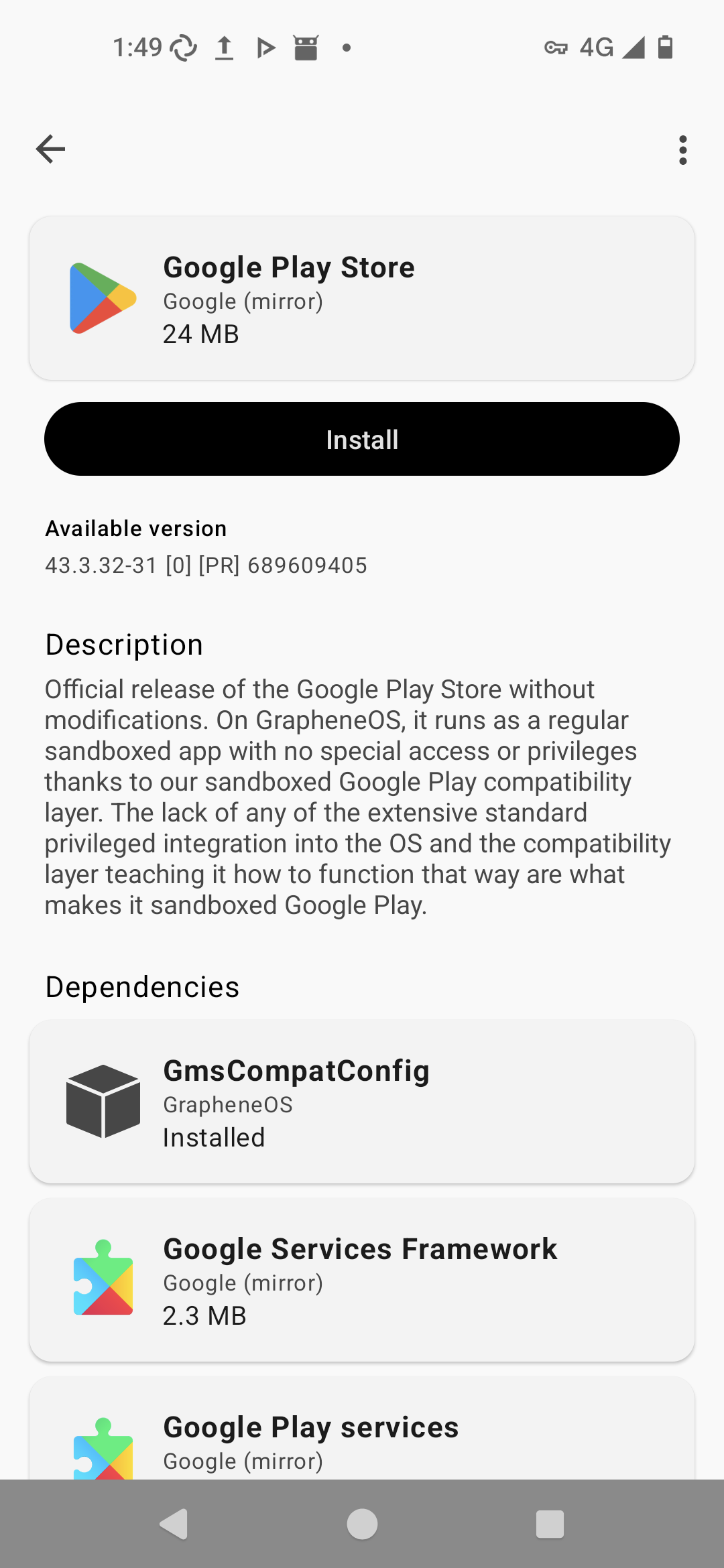Screenshot for you. Google is explicitly linked to for easy setup. F-Droid is not. “There is nothing” is simply disingenuous.

Website: https://roffey.au/
Screenshot for you. Google is explicitly linked to for easy setup. F-Droid is not. “There is nothing” is simply disingenuous.

I use GrapheneOS but I don’t like how Google Play-centric it is. It is geared towards people installing their “normal” apps with the GrapheneOS special sauce sandboxing. No F-Droid by default where all of the FOSS apps are.


PSA: if your financial institution/government/<other website> is using SMS codes (aka PSTN MFA) for multi-factor authentication they are practically worthless against a determined attacker who can use SIM swap or an SS7 attack to obtain the code. Basically you are secured by a single factor, your password. If your password is compromised it may be sold via black hat marketplaces and purchased by an attacker who would then likely attempt to break that second factor.
The best way to protect yourself is to use a unique password; a password manager especially helps with this. Sometimes institutions will offer “Authenticator” (TOTP) as a second factor, or PassKey authentication, both secure alternatives to SMS codes.
Here in Aus I’m working with Electronic Frontiers Australia to try and force some change within government and financial institutions (via the financial regulator). Most banks here use SMS codes and occasionally offer a proprietary app. One of the well-known international banks, ING Bank, even uses a 4 pin code to login to their online banking portal. 😖
Unfortunately SMS codes are a legacy left from old technology and a lack of understanding or resourcing by organisations that implement it. Authenticator/TOTP tokens have been around for 16 years (and standardised for 13 years), and PassKeys are relatively newer. There is a learning curve but at the very least every organisation should at least provide either TOTP or PassKeys as an option for security-minded users.


Yeah it is a bit of a pain. I currently only have a few users. Tooling-wise there are ways to tail the journals (if you’re using journalctl) and collate them but I haven’t gotten around to doing this myself yet.
That’s probably a fair point. I can’t say too much as I haven’t touched Windows desktop or server too much.
Could be apples vs oranges here though as we’re talking about getting started versus well established setup, but my current employer is looking at adopting Ansible + Packer for imaging and partially Ansible-managing Windows servers where it makes sense because of limitations in SCCM and GPO. As far as I can see across the divide Windows Server isn’t all smooth sailing.
I can’t say I’ve managed Linux desktops at scale (so technically I should leave it there) but I do manage several hundred Linux VMs with Ansible, and I manage all of my PCs with Ansible. Desktops are a different ballgame to servers, dealing with end users and all, but I still don’t think it would be that hard once it’s been set up.
That sucks :( I’m pretty much in the same boat. I get to use a Linux desktop at work on the proviso that I don’t raise support requests. We use Microsoft for nearly everything so naturally it’s an uphill battle. The web UI is quite buggy and “not recommended” by my org. Teams doesn’t support Firefox so I have to run a separate browser especially for it.
But aside from interfacing with Microsoft everything just works, and really nicely.
That’s awesome - great to hear about Linux desktops bring used by non-techies especially in a company.
How was it received out of interest?


At work we use separate clusters for various things. We built an Ansible collection to manage the lot so it’s not too much overhead.
For home use I skipped K8s and went to rootless Quadlet manifests. Each quadlet is in a separate non-root user with lingering enabled to reduce exposure from a container breakout.


It’s called Microsoft Clarity, and yes, Teams does it https://clarity.microsoft.com/ https://en.wikipedia.org/wiki/Session_replay


Securing proprietary hardware against peeps installing alt OSes


Technically XFS is also a CoW filesystem, but it doesn’t have the vast array of features that ZFS does like volume management, snapshots, send/recv etc. It does have reflink support which I guess is a kind of snapshot for a file.


OpenZFS is under a completely FOSS license but it’s incompatible with the GPL and can’t really ever be merged into the Linux kernel. The workaroundids to provide it as source code which gets compiled as a module every time there’s a new kernel via dkms.
More controversially, Canonical ship OpenZFS pre-compiled in Ubuntu which some lawyers believe to be infringing on ZFS’ codebase.
Honestly the OpenZFS situation on Linux is probably the biggest single reason for the growing interest in btrfs and bcachefs, the former slowly becoming default on more Linux distros over time and lots of investment from SUSE and Facebook AFAIK.


ext3 had journaling, but not ext2. Also ext3 doesn’t really exist anymore as it was merged into the ext4 driver which can read the old format.
But it is Google Play-centric. There is an option to install Google Play. There is not an option to install other app stores like F-Droid, unlike some of the other AOSP clones.